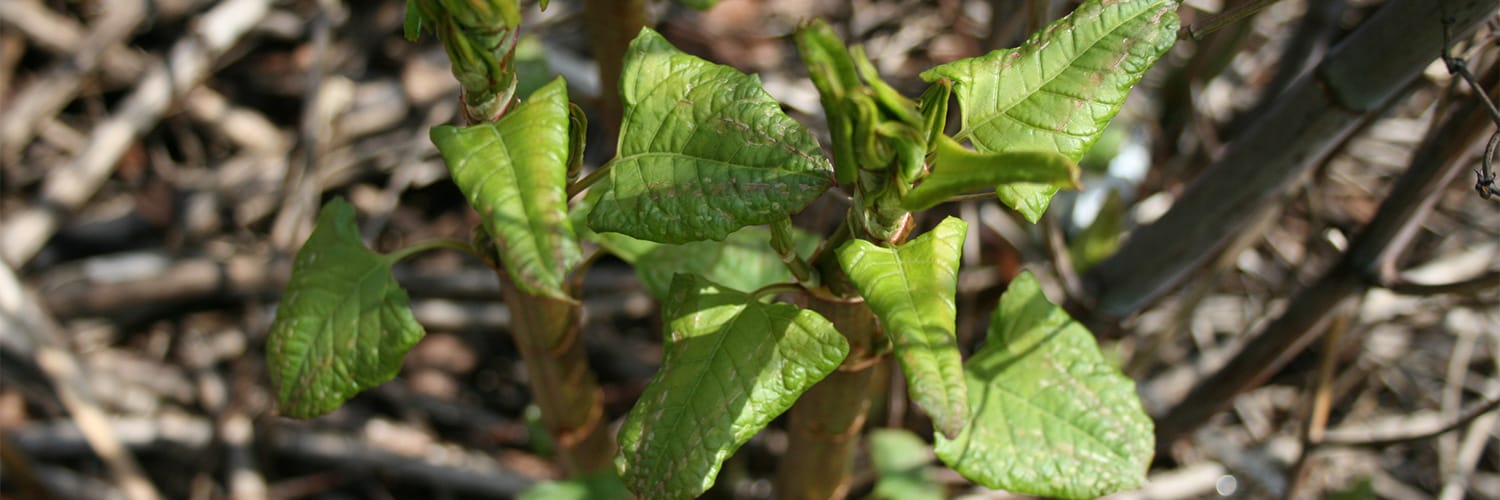There are several successful methods for managing a Japanese knotweed invasion. We favour leading with herbicides.
Once you have successfully identified an infestation of Japanese knotweed on your property, it’s then time to put a plan in place for controlling Japanese knotweed the spread and hopefully eradicate it entirely. Although Japanese knotweed grows prolifically throughout the British isles, it can cause significant damage to building foundations, walls, pavements, roads, and services if left unmanaged. Our experts specialise in Japanese knotweed control and have mastered the best techniques for keeping this menacing weed in check.

Using herbicides to control Japanese knotweed
The rapid spread and swift growth of Japanese knotweed is down to its deep rhizome system. It grows rapidly from February onwards, creating a dense canopy of leaves that displaces native plants and insects. It is resistant to most of the diseases that affect native foliage and it thrives in our climate. The real damage to property happens when Japanese knotweed attempts to grow through cracks and crevices. Optimal conditions mean that it can grow up to 10cm a day, and can exploit damaged areas in brickwork, concrete, and even tarmac.
Time has shown that cheap, short-term Japanese knotweed control methods just don’t work. You cannot simply cut it back or cover it up and hope that it’ll die; in fact, cutting back Japanese knotweed can cause fragments to disperse, take root and exacerbate your problem. As well causing a further knotweed problem, it’s also an offence to plant, disperse or allow dispersal, or cause the spread of Japanese knotweed and other non-native invasive plant species listed under the Wildlife and Countryside Act 1980.
Extensive excavation might be an option to completely eradicate the infestation, but this can prove prohibitively expensive for property owners or impossible due to how deep the root systems run. In many cases, the optimum result in Japanese knotweed management will be an extended period of dormancy initiated by herbicide treatment.
Japanese knotweed will respond to common contact herbicides, but they will only damage the leaves and flowers. In order to truly control the spread, you must target the knotweed root system. A translocating herbicide will travel through the plant down to the roots to prevent further growth or spread. The best time to spray Japanese knotweed is in later summer or early autumn, when the plant is in flower and the foliage conducts more nutrients to the rhizome to build food reserves. The translocating will hitch a ride with the travelling nutrients to cause optimal damage.
Professional weed controllers have access to stronger chemicals to facilitate the control of knotweed. For best results, the infected area will require regular applications to control new knotweed growth.
Knotweed experts will put in place a management plan outlining the ongoing treatment, and this document is a prerequisite for buying or selling a property where a Japanese knotweed infestation has been identified. This document should be enough to satisfy most mortgage lenders that the problem is being dealt with.
Need expert advice?
We hope that we have highlighted an effective approach to Japanese knotweed control. At PBA Solutions we routinely guide clients through the pros and cons of different Japanese knotweed control options so if you want to benefit from our breadth of expertise in this area please feel free to contact us.
Just call 0203 174 2187 or 01202 816134 to talk to one of our consultants.

